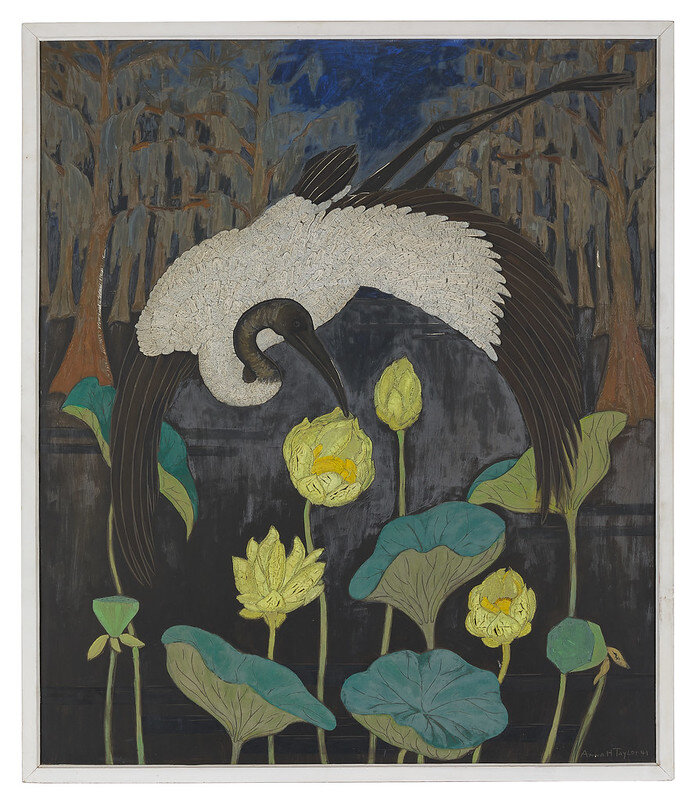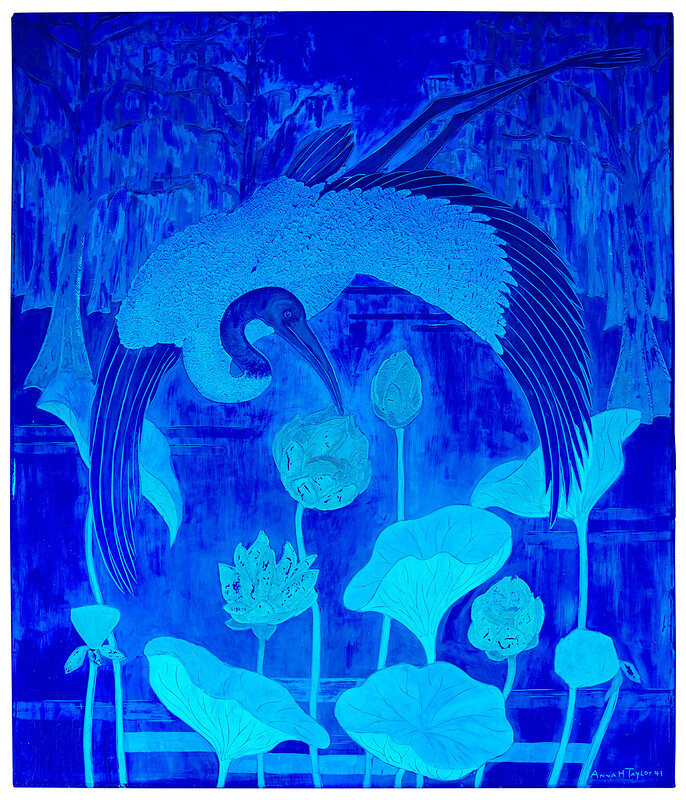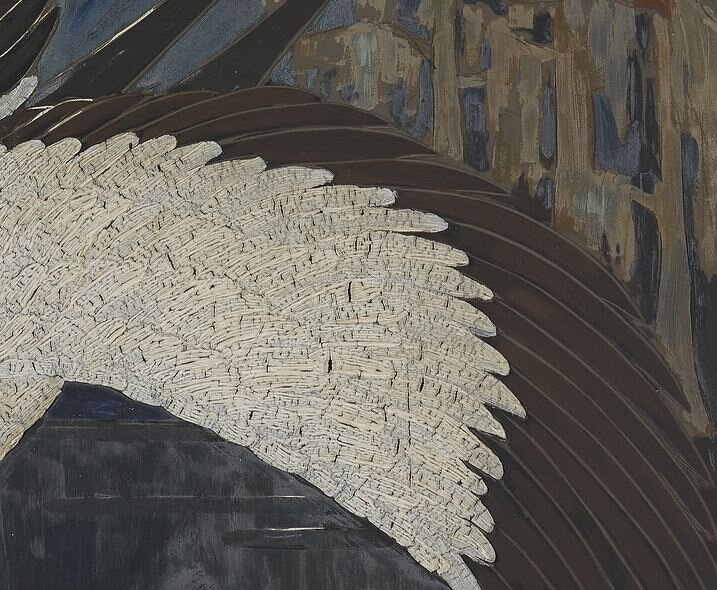Anna Heyward Taylor (1879 – 1956) was a celebrated printmaker and one of the principal artists of the Charleston Renaissance. Her lush, vibrant prints frequently feature floral and avian motifs. We were thrilled when a client brought in an unusual Anna Heyward Taylor piece, with all the hallmarks of her work. However, there was one key difference: instead of a print, this work was the actual linoleum she used to make the prints themselves which she then painted to take on a life of its own, bringing the work from the second to the third dimension. The client was concerned as the paint was peeling from the linoleum, due to an inherent vice in the work.
Taylor’s piece when it first came to The Center.
The painting was done on linoleum support which was later adhered to Masonite.
The back of the piece, prior to receiving treatment.
The linoleum had delaminated from the Masonite along the top edge and had bulged forward, most likely due to fluctuations in temperature. Taylor didn’t prime the piece, so the background was the original linoleum color, with the image painted in thin to thick passages of oil paint. Over time, the linoleum background had blanched, and the oil paint had curled forward, pulling a thin layer of linoleum support with it.
The piece observed under blacklight.
To start treatment, Amber Schabdach, Senior Paintings Conservator, cleaned the piece to remove surface grime. The deformations were flattened as best as possible by re-adhering them down after softly heating and weighting them. Larger areas of flaking paint were consolidated and set down very carefully. After discussions with the client, it was decided that the inherent flaking on the bird had taken on a feather-like appearance and brought another breath of life to the work. As the flaking in this area was secure, although raised, it was decided to leave these "feathers" curled and to not flatten them down.
The feathers of the bird, which were stable but had started to peel, giving them a lifelike effect.
Once treatment was finished, the painting was reinstalled in a new, heavy-duty custom frame with a new strainer support behind. An acid-free Coroplast backing board was attached to protect the back from dust.
The back of the piece, after treatment.
It was exciting to treat this unusual piece and ensure that it is preserved for years to come!
Before treatment.
After treatment.
The piece, now conserved and housed in a frame.









